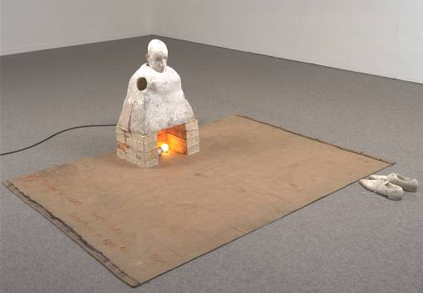The open section of the Venice Biennale is a cattle market of new talent thronged with dealers, curators and critics on the look- out for that rare commodity: the Art Star of the Future. It is not often memorable, yet one or two artists in last May's Aperto found ways to make themselves heard above the customary transglobal babble. Most obviously Jeff Koons, the American neo-Pop artist, whose enlarged photographs of himself plus Italian sex-queen-turned-politician La Cicciolina looked like a calculated attempt to upstage the opposition. For his part, Polish artist Miroslaw Balka courted international recognition in Venice by exhibiting a few roughly sawn planks of wood, a makeshift bed and a couple of piles of dust. This was so self-effacing that it came across as aggressive.
Six months on and Balka may have begun to reap the rewards of his tactics. He is one of seven artists who have been selected for ''Possible Worlds: Sculpture from Europe'', an exhibition staged jointly by the ICA and the Serpentine Gallery. ''It is neither possible nor advisable'', write the show's organisers, ''to collapse these artists into a group or movement, just as it is difficult to define what makes them European.'' This tone of prevarication has carried through to the choice of one of those conveniently vague titles curators tend to fall back on when in doubt. This signals a hesitancy which, in the circumstances, might be appropriate. ESU (European Sculptural Union) looks a long way off.
Still, when it comes to just possibly in strictly provisional terms beginning to attempt an approximate definition of contemporary European sculpture, Miroslaw Balka's work is a good place to start. In Venice, Balka's installation seemed to encapsulate the difference between a certain kind of European art and its American opposite. Koons versus Balka was revealing:...


